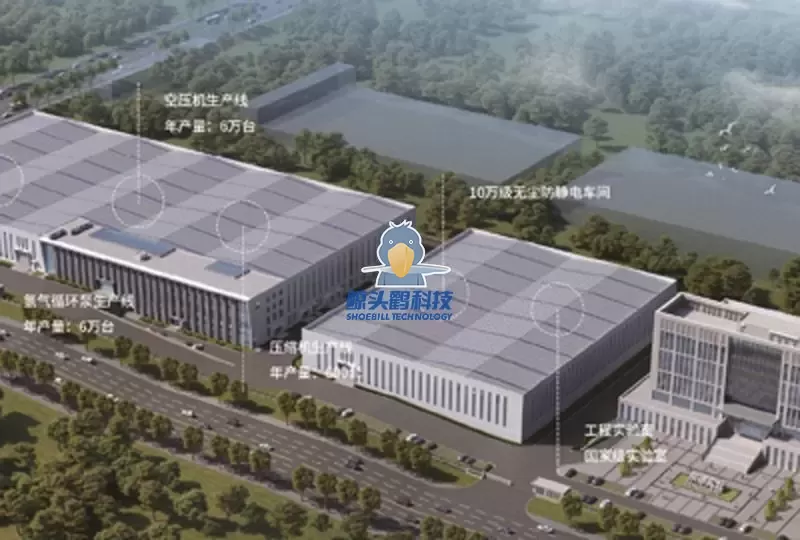In the era of Industry 4.0, the concept of smart mechanical workshop layout design has emerged as a core driver of productivity, safety, and sustainable growth. A well-planned workshop layout is no longer limited to arranging machines in sequence—it now integrates digital intelligence, ergonomics, lean manufacturing principles, and adaptive flexibility. By merging mechanical engineering with smart technologies, companies can create layouts that maximize space, reduce waste, and support continuous innovation. As professional factory planning and plant layout service provider, Shoebill Technology will share the benefits of smart mechanical workshop layout design, etc.
Understanding Smart Mechanical Workshop Layout Design
The essence of smart mechanical workshop layout design lies in harmonizing traditional mechanical processes with modern technological advancements. Instead of treating the layout as a static floor plan, the design now focuses on dynamic adaptability. Automated equipment, IoT-enabled devices, and real-time data monitoring reshape how production flows across the shop floor.
By embedding intelligence into the design phase, manufacturers ensure that the workshop can evolve with changing demands—whether it is scaling up production, introducing new product lines, or complying with sustainability requirements.

Core Principles Behind Intelligent Workshop Planning
A smart workshop layout must follow principles that ensure efficiency, safety, and innovation. These include:
Flow Optimization – Machines, tools, and workstations are positioned to minimize unnecessary movements and transportation delays.
Flexibility and Scalability – Modular layouts allow quick adaptation to new technologies or market needs.
Digital Integration – IoT sensors, real-time monitoring systems, and digital twins ensure predictive maintenance and resource management.
Ergonomics and Safety – Worker-friendly designs reduce fatigue and workplace hazards.
Sustainability – Energy efficiency, reduced waste, and eco-friendly layouts support green manufacturing goals.
Benefits of Smart Mechanical Workshop Layout Design
The advantages of a mechanical workshop layout with smart features extend beyond simple organization:
Productivity Gains: Efficient layouts streamline processes, reducing bottlenecks and downtime.
Cost Efficiency: Better utilization of space and resources lowers operational costs.
Improved Safety: Smart monitoring systems enhance hazard detection and worker protection.
Higher Quality Output: Consistent workflows and digital oversight reduce human error.
Sustainable Operations: Intelligent energy distribution and waste reduction contribute to greener practices.
Smart Workshop Layout Design for Space Optimization
One of the most pressing challenges in mechanical workshops is limited space. A smart mechanical workshop layout design for space optimization involves advanced simulations to predict movement patterns, material handling requirements, and storage needs.
Technologies such as 3D layout visualization and digital twins enable planners to create layouts that maximize every square meter. By simulating different configurations, companies can identify the most efficient arrangement before implementation, saving both time and cost.
Integration of Automation in Mechanical Workshop Layouts
Automation plays a critical role in reshaping intelligent mechanical workshop layout design. Collaborative robots (cobots), automated guided vehicles (AGVs), and robotic assembly lines demand layouts that allow seamless human-machine collaboration.
For instance, pathways for AGVs must be carefully planned to avoid collisions, while robotic arms need designated safe zones. A smart workshop layout anticipates these needs by integrating automation-ready infrastructure from the start.
Role of Digital Twins in Smart Layout Planning
A groundbreaking advancement in modern mechanical workshop layout design is the use of digital twins. A digital twin is a virtual replica of the workshop that mirrors real-time performance. By using this technology, engineers can simulate workflow changes, predict bottlenecks, and test alternative layouts before implementing them physically.
This approach reduces trial-and-error costs and allows continuous optimization, ensuring the workshop adapts as production demands evolve.
Smart Mechanical Workshop Layout for Lean Manufacturing
Lean principles align perfectly with smart mechanical workshop layout design. By minimizing wasted motion, time, and material, a lean-smart hybrid layout achieves operational excellence. For example, strategically placing tools near workstations reduces downtime, while integrating automated tracking ensures minimal inventory buildup.
The synergy of lean thinking and smart technology turns the workshop into a responsive, efficient, and highly competitive space.
Sustainability in Smart Mechanical Workshop Layout Design
With increasing global emphasis on sustainability, workshop layouts must prioritize eco-friendly practices. Smart designs include:
Energy-efficient lighting and HVAC systems integrated into the workshop infrastructure.
Circular workflow models that encourage recycling and material reuse.
IoT-based monitoring for reducing energy consumption and controlling emissions.
This not only supports regulatory compliance but also builds a reputation for responsible manufacturing.
Conclusion
The journey toward a smart mechanical workshop layout design is not merely about reorganizing machines—it is about creating an intelligent ecosystem where technology, people, and processes coexist seamlessly. By blending automation, digital twins, lean principles, and sustainability, manufacturers can unlock new levels of productivity and competitiveness.
A workshop with a smart layout is no longer a static workplace; it becomes a living system, constantly adapting, learning, and evolving with industrial progress. For businesses ready to embrace the future, intelligent layout design is the cornerstone of growth.










